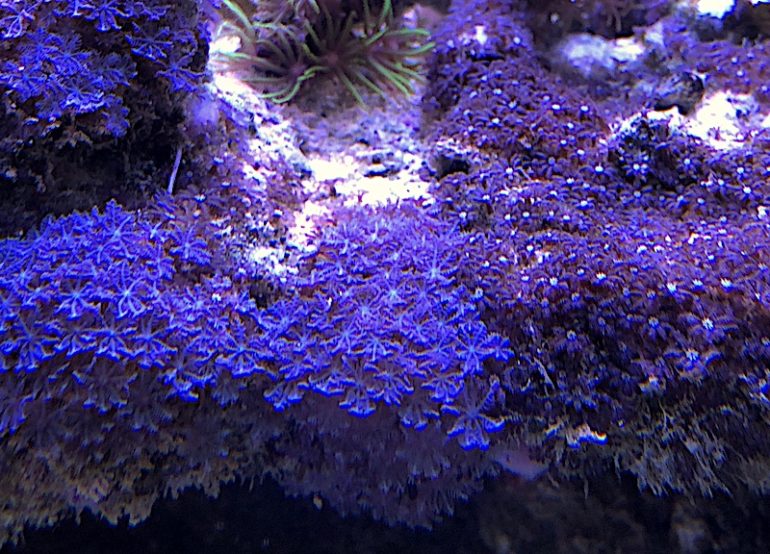After being in the reefing side of the hobby for almost forty years I have seen or had just about every pest imaginable in my tanks. While I am especially thinking about our friend Jake and his passing a year ago, I thought it would be a good time to talk about the last topic I was discussing with him. We literally were discussing this on the morning he got on the plane, so I feel it is appropriate to share what I learned about using Fenbendazole, what my overall experience has been, and what I have seen now over a year after using it.
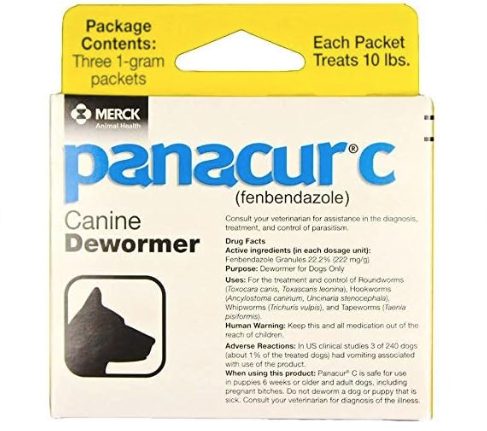
Fenbendazole (Panacur) is an antihelminthic, i.e. worm-killing drug, that is used in everything from deworming dogs and horses to potentially ridding humans of giardia infestations. And it is very effective at doing this and more. That is, it can be very toxic to a number of organisms. In fish, it is used to eliminate various fish parasites including trematodes, nematodes, and cestodes. This medication is usually given by mouth after being mixed in the food. And it is usually best to do this in a separate quarantine tank away from corals. This is because this medication is lethal to just about all cnidarians from hydroids to anemones, and especially to most of the soft corals that we keep in our tanks. For this reason, I am strongly urging everyone not to use this as a reef tank treatment as there is a possibility for things to go wrong when using it, and this needs to be considered.
Sarcothelia pest blue clove polyps
When deciding to use this medication in my tank, the decision did not come easily but I was at my wits end when I made the decision to use it. The decision to use it came about because my tanks had become infested with the pest blue clove polyps, Sarcothelia (blue clove polyps), and it was overgrowing and killing much of the 40-gallon lps tank, as it irritated most of the corals with which it came into contact. Prior to deciding on this course of action I had tried the following steps to eradicate it. First, it was attacked by brushing it off the rock wherever it was seen, it was also hit with a laser, as well as with an intense UV flashlight. It had been covered in calcium hydroxide, kalkwasser, paste, hydrogen peroxide, as well as various aiptasia-killing pastes, all with no success.
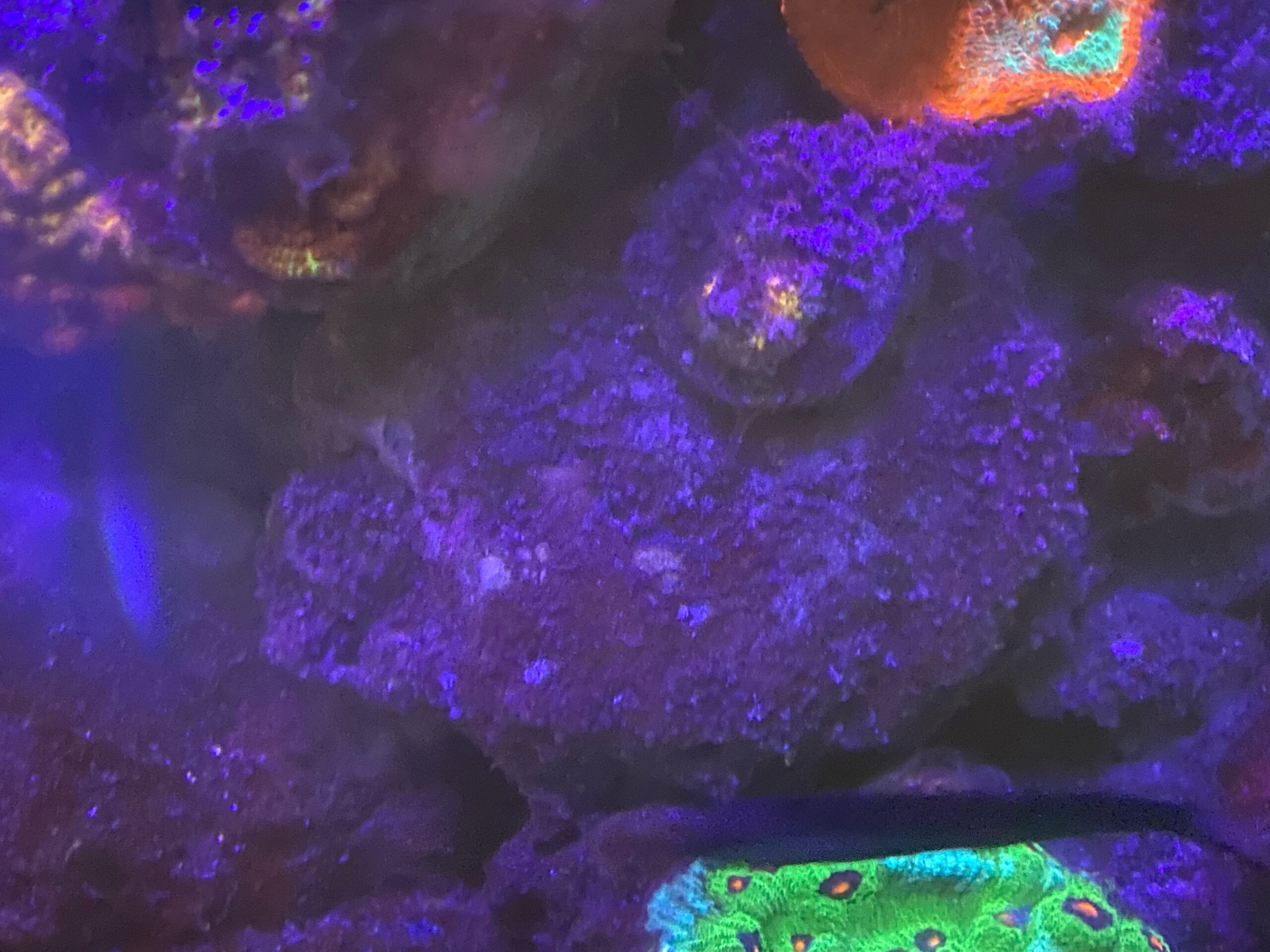
The old standard for treating these pests is Fluke tabs, but sadly these are no longer available. At least I could not find them anywhere. I even experimented with a supposed killer of Sarcothelia, the medication Clout, by soaking a piece of infected rock in a separate container containing the medication and it had no effect. Initially, it was confined to my forty-gallon lps tank, which is connected to my 70-gallon frag tank and my 500-gallon sps display tank via a 180-gallon sump. Since it was mainly in the small tank, I even took out every single piece of live rock and coral and scraped it off of every hard surface it could be found on. These attempts at eradication had gone on for over three years and still, this pest continued to come back and worse was starting to pop up in the 500-gallon display tank. Sadly, as far as I know, unlike most of the other pests we encounter, there are no known natural predators for Sarcothelia that I know of.
It should be noted that fenbendazole is an indiscriminate killer of many invertebrates. After doing much research it was clear that it would not only kill the Sarcothelia, but it would also kill any soft corals that were in the tank including leather and Sinularia corals, Xenia, and Anthelia, as well as hydroids, snails, other mollusks and virtually any kind of worms including bristleworms, vermetid worms and possibly even flatworms. Also, once it is added to a tank, it will dissolve into the live rock and take months to break down and be removed and during this time none of these invertebrates can be added safely.
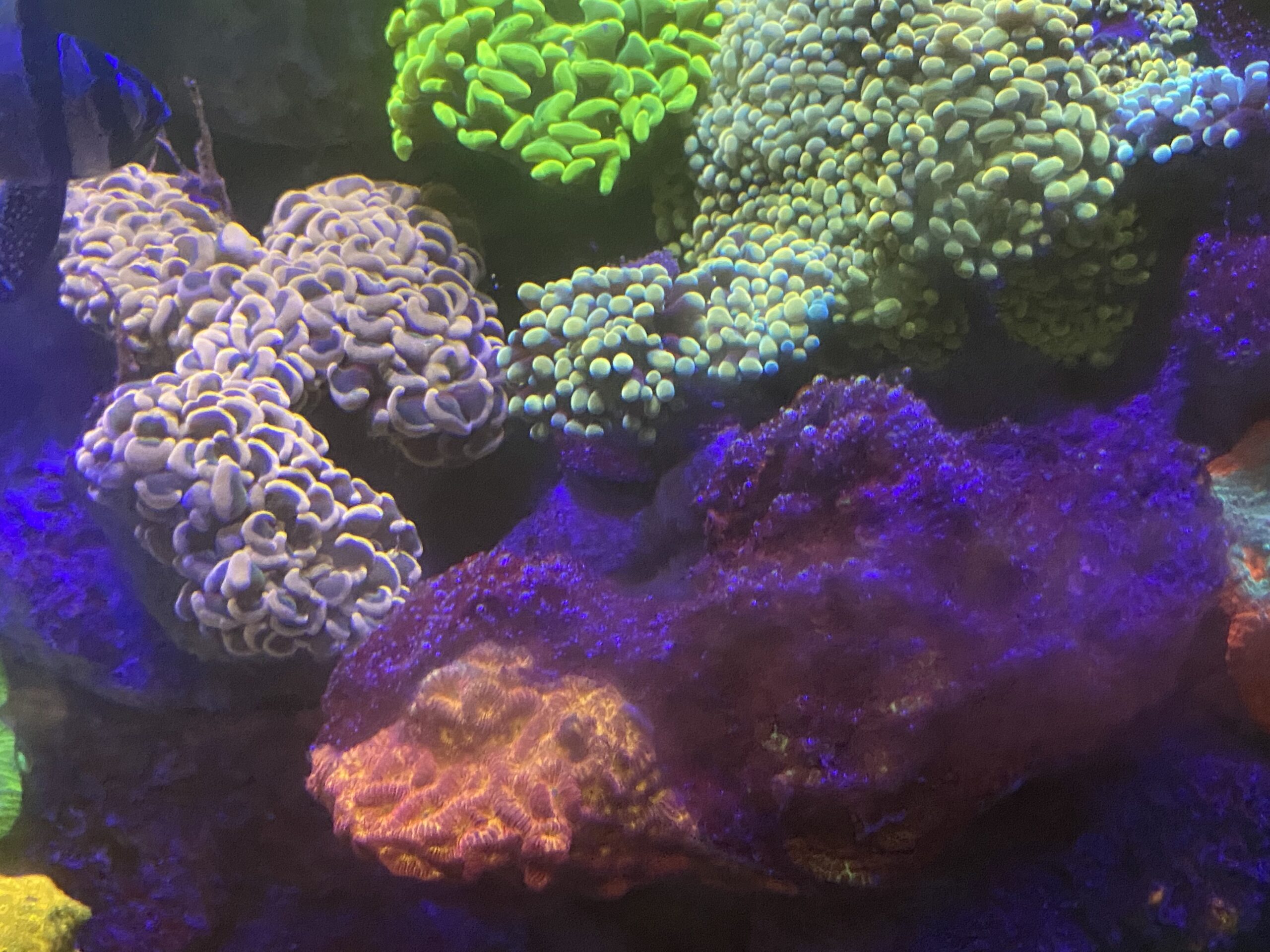
After considering all of these factors, as well as consulting with several other hobbyists as well as a couple of people in the industry, I still decided to use it. There is some documentation that it needs to be dosed twice in order to completely do its job so the treatments would occur when I would be home for at least a month so that if a problem arose, I would be home to take care of it.
Fenbendazole dosage
The first step in the treatment was to determine how much Fenbendazole would be needed. The recommended dosage is 2mg/gallon of tank water to be treated. Due to its toxicity, this is one medication where you want to determine as closely as possible the total water volume as you do not want to overdose. So the water volume in the entire system was calculated even accounting for the corals and live rock in the tank as well as the water in all of the plumbing. This amount came out to be approximately 595 gallons for the entire system. This amount of Fenbendazole powder needed was then weighed out.
Fenbendazole does not easily dissolve in water, so after determining the amount it was first dissolved in vodka which was then diluted in water, before this solution was added. Prior to adding the solution anything that would be affected by this medication was removed. All desirable soft corals, snails, and tube worms were removed and placed in a separate isolated tank. This solution was then slowly added to the tank over fifteen minutes. Despite its small size, I added half of the solution to the 40-gallon tank first owing to how badly it was infested with these pests. The rest was added to the main tank over a couple of hours assuming it would spread throughout the tanks. There are also some anecdotal reports as well as some reports in the literature that it may take a second dose to totally eradicate all the pests, so a second dose was weighed out as well. Carbon was shut off after dosing, but protein skimming was maintained.
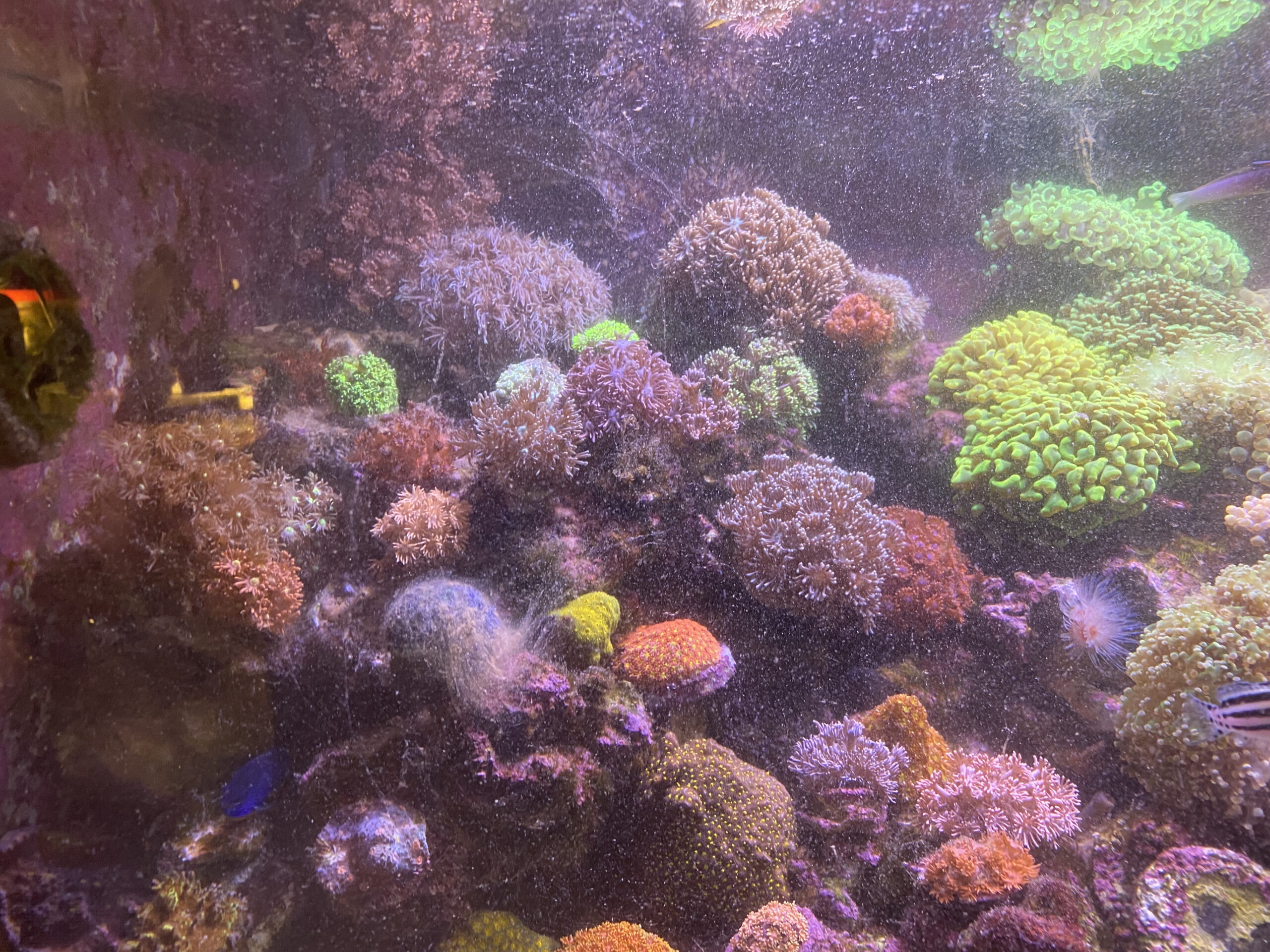
Dosing was done in the morning so that any significant problems could be observed, and 100 gallons of make-up water was prepared in case an emergency water change was needed. During the first twenty-four hours after dosing not much of a change was observed in any of the corals or in any of the tank’s inhabitants other than a few things, including the Sarcothelia looking irritated. This irritation was indicated by the corals looking closed up with a slightly gray coloration. On the second day, everything that was going to be affected started showing significant signs of distress. All of the Sarcothelia were completely closed up and withdrawn as were the Aiptasia anemones.
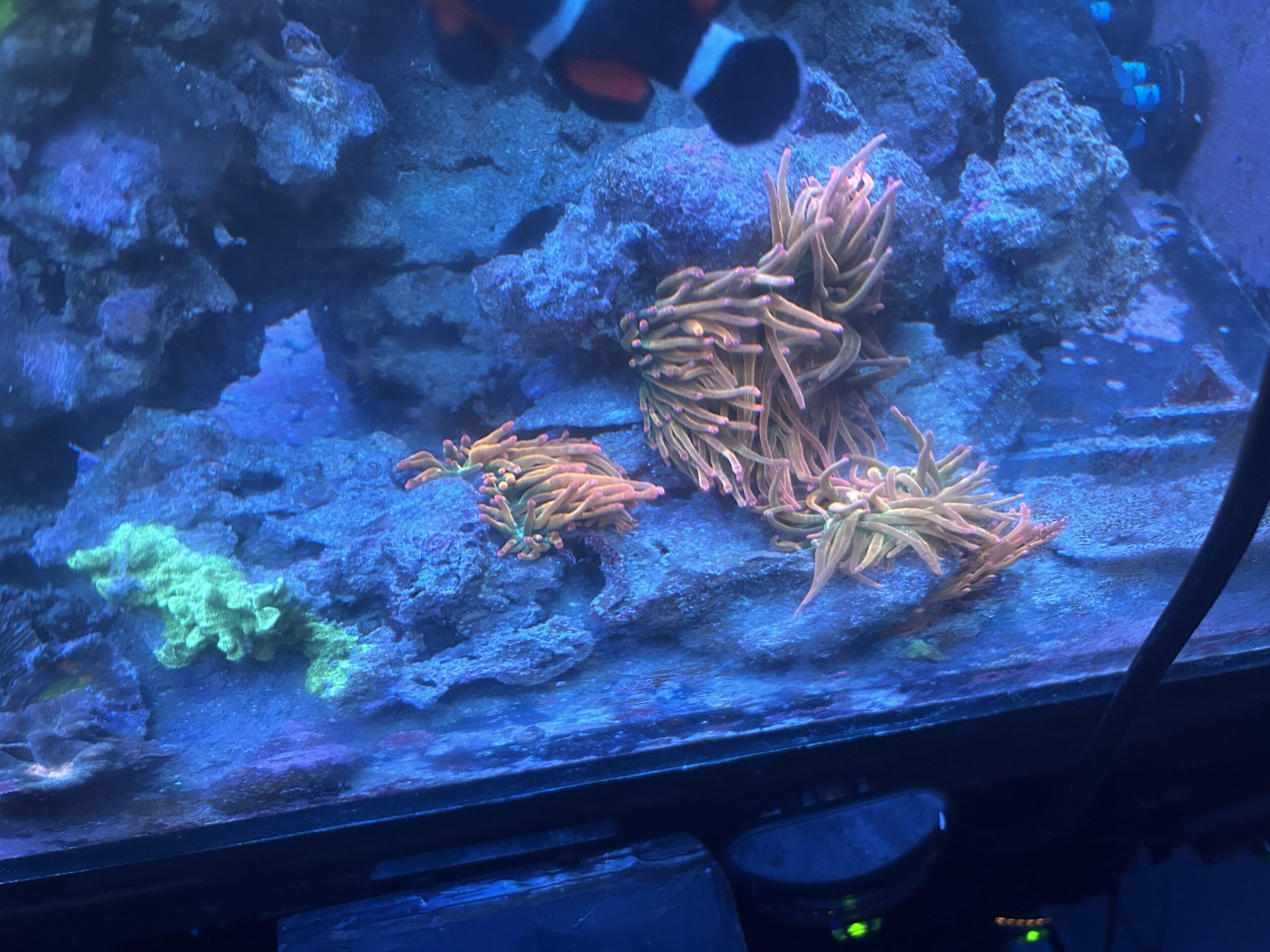
Due to their location and burrowing in the live rock, the bubble-tip anemones could not be removed and these retracted and shrank and had a black tone to them, so they were affected as well. Also all of the vermetid snails became inactive and withdrew into their tubes. However, none of this showed that the medication was working as much as did the death of all of the bristleworms within the system. I knew there was an excess of bristleworms in the system, especially in the lps tank, and that these worms were irritating the corals by entering their oral cavities after they had been fed, but I had no idea how many of these worms were in the system. On this second day, the carcasses of these worms filled the bottom of the tank and were almost an inch in depth in some places. Upon seeing this the entire bottom of all of the tanks with these worms was siphoned off. It should also be noted that at that time there was also an excess of Asterina in the main display and these also were killed by the medication and were also siphoned out.
By the fourth and fifth days, all of the encrusting Sarcothelia seemingly melted on the rocks where it was attached and these remnants were also siphoned off. In addition, other various unwanted organisms continued to die off as well. The bubble tip anemones fortunately survived, although they were stressed and took over three months to get back to their original size. Since this one treatment seemed to be effective a second dose was not given to reduce the likelihood of stressing the tank further. During this treatment, none of the sps or lps corals in any of the tanks were affected, nor were the amphipod or copepod populations. The phosphate and nitrate levels did skyrocket to .2 and 30 respectively and turf algae started to sprout from the rocks where the Sarcothelia was growing. Sadly, the Vermetid snails rebounded as well after two weeks of remaining in their tubes. In addition, the ORP in the tanks plummeted to 230 from a usual daily average of 335 and remained low for over a month.
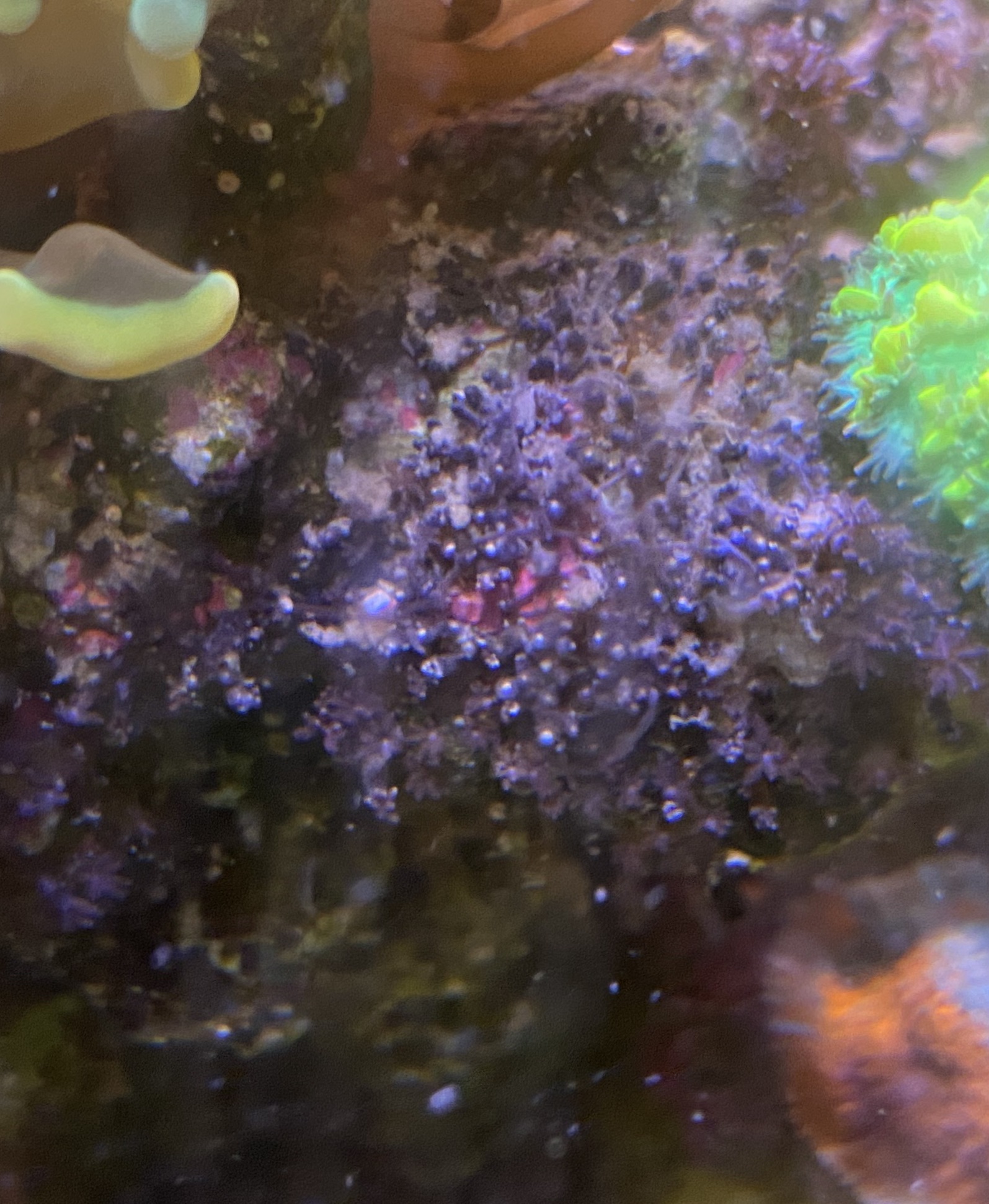
After two weeks when no sign of these pests was present a 20% water change was done and the carbon filter was again turned on. None of the other inhabitants in the tank died, but in looking at them it was easy to see that they were stressed until well after the water changes, a 20% change was done every three days for three weeks, and the carbon was changed every two days. It should be noted that it took over six months of changes and carbon until any snails could be added to the tank without immediately dying and over nine months before any soft corals could be placed in this system.
Now after one year, I am happy to report that Jake was right and that using Fenbendazole is indeed a successful method for eradicating Sarcothelia or other problematic soft corals like Xenia or star polyps as well as for eliminating an overpopulation of bristle worms. In my own experience, I also suspect that its use altered the bacterial population of the tank as well and this has taken some time to get back into equilibrium. As noted above, Fenbendazole is a toxic compound for many reef inhabitants and despite my success with it I strongly recommend that other means for eradicating reef pests be employed before it is even considered. Some may think I am being hypocritical by discussing my experience with Fenbendazole and then not recommending it, but what I am trying to do is explain how toxic this compound is and that using it should only be a last resort after everything else has failed.
Having had a reef tank for now going into my fortieth year I have seen and tried many things, as my goal in this hobby is to continually learn new things rather than just keep things alive, and I then share what I have learned. So while I have learned that Fenbendazole is one means for eradicating some pests, I have also learned that it is toxic to a much wider variety of life, so its use should be limited. Looking back at my discussion with Jake about this he too told me how well it worked, but that it would also act as an indiscriminate killer of many lifeforms in our tanks, so caution about its use was critical. My last word to him ending our discussion was “Thanks”.


